What Ever Happened to Mason Earle?
This article originally appeared on Climbing
This article originally appeared on Outside.
The Leaning Tower is a perfect piece of granite, rising from the Yosemite Valley floor like the point of a crown and forming the spillway of Bridalveil Fall. Climbers know it as one of America's most continuously overhanging cliffs, and the way it leans gives an impression that is both gentle and imposing.
For Mason Earle, the tower has deeper significance. This is where he was climbing on the day when, as he puts it, he died.
On May 11, 2018, around 5 P.M., the golden hour of a Yosemite spring evening, Earle and his climbing partner Nik Berry were finishing a productive session together. Earle had sent the crux pitch on a route they'd chosen, called Wet Lycra Nightmare (5.13d). He was exhausted, but it was the settled-in kind of fatigue that comes from working hard.
They rappelled off the cliff and were starting the walk back to their vehicles when Earle suddenly felt an excruciating pain in his neck, along with the overwhelming sensation that his whole system was crashing. "By the time I reached my van, the only thing I could think was, Something isn't right," he recalls. "I remember thinking, This isn't something that's going to go away."
Earle, 29 at the time, was considered one of the best crack climbers in the sport. Sponsored by Eddie Bauer, he'd put up bold first ascents in places like Venezuela and Canada's Northwest Territories, and he'd completed one of the hardest crack climbs in the world, a 5.14 overhanging finger route called Cobra Crack in Squamish, British Columbia. He'd also appeared with Berry and Alex Honnold in Sender Films' 2016 production Showdown at Horseshoe Hell, a quasi-documentary in which Earle and Berry comically portray a pair of scrappy underdogs.
Earle treated climbing like a job, but he also found time for other interests. He played guitar, banjo, and lute. He built things, including a decorative steel fire pit and other functional art. Before his mysterious episode in Yosemite, he was planning to get married to his great love, Ally Coconis. They'd met at the national park in their early twenties. She was working for its wildlife-management program--a summer job linked to the career she was considering in wildlife science--while he was living out of his Volvo and climbing. "It was a romantic and carefree beginning," she says. "We were very young and living our best lives."
In September 2017, they bought a house together in Salt Lake City, where she worked at the Natural History Museum of Utah while he made regular trips to Moab. Earle was nearly always doing something, even on rest days. He'd work on their house or on art projects. He loved riding bikes and kept a fleet of strange rigs he'd built or modified--including his pride and joy, a bike with a lightweight, propane-powered engine on the back that shot flames. They had good friends and were part of a tight-knit community. There was a lot of lightness in their existence.
But there was something hanging over 2018. Earle had been getting sick a lot that spring. Little colds here and there, then a case of the mumps. He didn't know it at the time, but that day on the Leaning Tower would be his last as a climber.
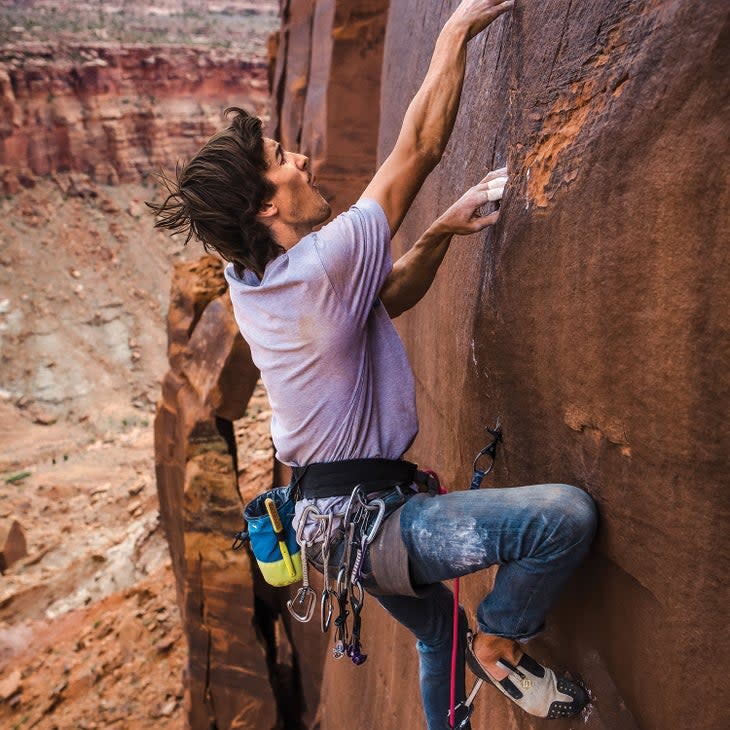
When Earle returned home from Yosemite, the symptoms he experienced there got worse. For a while, he could do a few easy things around the house, but the one time he tried going to the climbing gym, he left early with a splitting headache. On days when it seemed like he was getting better he'd take short hikes, but there were also days when light and sound were overwhelming, and he'd experience brain fog so severe that he could barely process what people were saying.
Earle and Coconis married in July of that year, but all day leading up to the ceremony, he could barely get up--in fact, he could barely move. He eventually rose and made it through the wedding, but in the weeks that followed his condition worsened, to the point that it started to control almost everything else in their lives. Earle spent nearly every hour of the day in bed with the curtains drawn and an eye mask on. The smallest stimulus, like the sound of a door opening, became intolerable. "The first couple of months were terrifying," Coconis says. "We had no idea what was going on." Trips to the doctor lead to dead ends. Earle still posted old climbing images on Instagram, but his world was folding in on itself.
Shortly after the wedding, Earle saw an infectious-disease expert who suggested that he might have myalgic encephalomyelitis, a condition also known as chronic fatigue syndrome, or ME/CFS. This doctor sent him to an ME/CFS specialist, and in December of that year Earle was officially diagnosed, based on existing criteria for the illness. Coconis remembers feeling a twisted sense of relief that they finally had some answers. But she didn't fully understand what they were in for.
After that things hit bottom. Earle kept staying in bed most of the time, only getting up for meals. He couldn't read and rarely left the house. He couldn't listen to music or play his instruments. He and Coconis made numerous trips to the emergency room, when Earle's symptoms became so acute that he thought he was going into shock. But all they could do at the hospital was give him an IV and try to calm his nervous system with medications. "I don't even know how to describe how he felt," she says. "But for Mason to say 'Take me to the emergency room' is a lot."

In April of 2019, Earle was briefly hospitalized. His parents came in from Massachusetts to help cook and clean. Coconis played the role of caretaker while Earle and his mom, who spent decades working in community health, researched symptoms, treatments, and specialists.
The laughter that animated Coconis's relationship with her husband was slowly fading away. She would come home from work and lie next to him in bed, and then together they would do Jin Shin Jyutsu, a massage method believed to soothe the central nervous system. They would talk and cry and tell each other: "It's going to get better."
"You can't have big, grand dreams," Earle says of life with chronic fatigue syndrome. "When things are really bad, you're just lying there in the dark. You become a ghost, you fade out, you don't exist in the world. But you're still there for all of it."
Chronic illness has a way of taking over lives, physically and emotionally. Coconis had no regrets about starting a life with Earle, but there were times when she wasn't sure how to communicate with her husband. "I definitely had moments where I felt it was absolutely unfair that I married somebody who was so able-bodied, and then, all of a sudden, so disabled," she says. "I still had all these ambitions to be outside and go climbing and running and exploring and skiing, and all of a sudden I didn't have a partner. Not just an outdoor partner. A partner in life."
In the midst of the stress, with Earle's encouragement, Coconis applied to graduate school. And in July of 2019, they moved to Reno, Nevada.
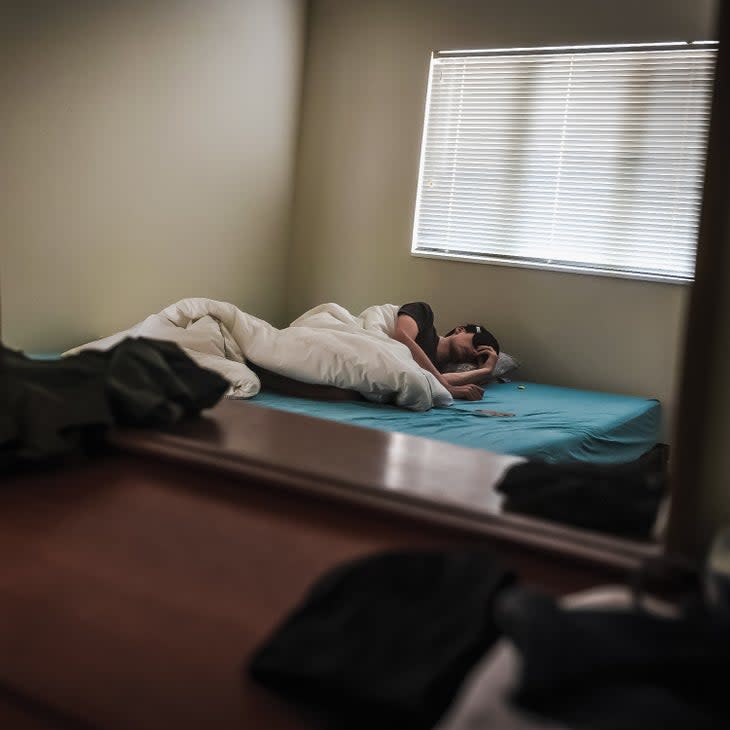
ME/CFS is a mystery. How it works is little understood, and while some physicians think it's more prevalent than we're aware of, there have always been those who question it as a physical experience. According to a 2021 Healthcare article by Anthony Komaroff, a clinical investigator and professor of medicine at Harvard Medical School, the skepticism comes from the fact that it's an illness defined by symptoms difficult to objectively confirm.
Statistics about its prevalence are also unreliable. A 2015 report by the Institute of Medicine--the health arm of the National Academy of Sciences--puts the number of Americans who suffer from ME/CFS at between 836,000 and 2.5 million. Diagnostic criteria were only developed in 2015 and still rely on a set of symptoms versus a specific pathogen or microbe, making it a tricky condition to accurately count. More recently, researchers have started to see patients with long COVID who seem to have symptoms that overlap with those of ME/CFS, complicating things further.
The cause of ME/CFS remains unknown, but studies show correlations between chronic fatigue and persistent viral infections like mono, which can lead to the kinds of problems Earle has experienced. Lyme disease and the Epstein-Barr virus also may be linked to ME/CFS. Fibromyalgia, a disorder that causes widespread muscular and skeletal pain, may be related, too.
Ronald Tompkins, codirector of the ME/CFS Collaborative Research Center at Harvard-affiliated hospitals, spent decades studying ME/CFS before his death in 2022. He believed that neuroinflammation, which can cause chronic activation of the brain's immune system, plays an important role. New studies are also looking into biological abnormalities, including cervical spine impingement, that impair blood flow to the brain.
Whatever the cause, the problems extend well beyond fatigue. In addition to the headaches, sensory sensitivity, and overwhelming confusion and pain experienced by Earle, sufferers may also develop chronic depression. Watching Earle deal with all of it, Coconis says, "changed me and my thoughts about life and humans and their fragility."
For some, the problems show up gradually; for others, like Earle, they appear suddenly. Tompkins saw numerous cases involving young athletes who could identify the exact moment when their symptoms began.
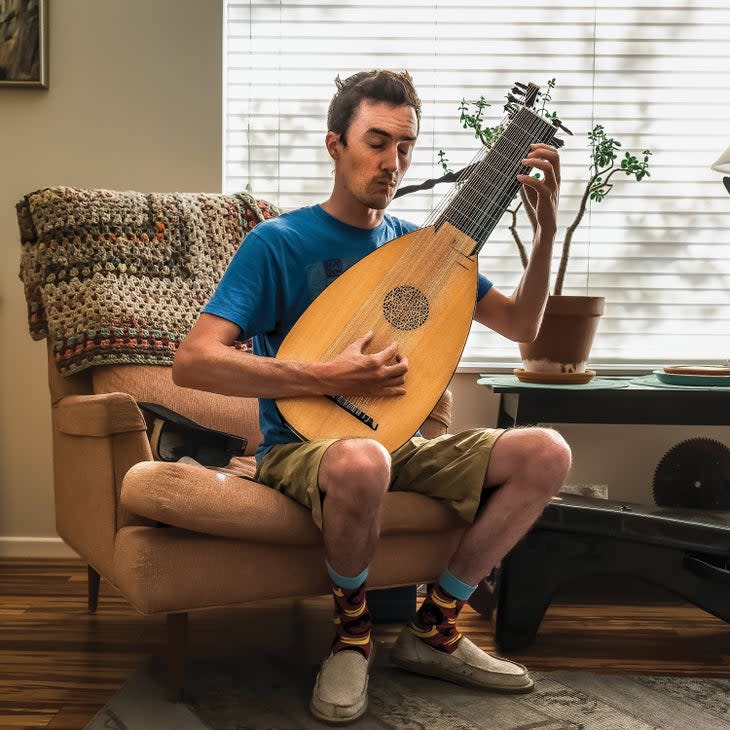
Like many chronic illnesses, ME/CFS is primarily diagnosed by exclusion after other possibilities have been ruled out, which has led to a degree of dismissal by the medical establishment that frustrates ME/CFS sufferers.
The skepticism has persisted for a while. In the 1980s, a cluster of presumed cases showed up in and around the Lake Tahoe resort town of Incline Village, Nevada, with nearly 160 residents mysteriously falling ill. The CDC was eventually brought in, but the cause of the outbreak remained elusive, prompting some to start calling ME/CFS "yuppie flu," suggesting that it was something overly pampered people had dreamed up. In the 1990s, psychiatrists in England declared ME/CFS purely psychosomatic, since the lab tests of patients diagnosed with it kept coming back normal.
Because the origins of the illness are still being studied, doctors occasionally try to rule out psychological factors before addressing physical symptoms. But physicians like Tompkins have argued that ME/CFS isn't a variety of depression or some another mental illness rooted in loss of hope or engagement with the world. "If you ask patients, 'If you could cure this, what would you do?' you find that they know exactly what they would go back to," he said.
For these reasons, ME/CFS research is woefully underfunded. Komaroff and others have spent years trying to convince colleagues that their patients aren't making things up. In 2015, Komaroff published a paper in The Annals of Internal Medicine called "Myalgic Encephalomyelitis/Chronic Fatigue Syndrome: A Real Illness." That was the same year when, after reviewing more than 9,000 publications on the subject, the Institute of Medicine published a set of diagnostic criteria about ME/CFS for health care providers. The organization described a condition of profound fatigue that was not caused by excessive exertion and is not alleviated by rest, calling it a "serious, chronic, complex systemic disease."
After months spent immersed in research, online forums, and the work of specialists, Earle and his doctors think it's likely he was genetically predisposed to cervical spinal stenosis, or a narrowing of the spinal canal, which can cause pressure to build on the nerves that pass through part of the spine. It's possible that this, combined with years of hyperextending his neck while climbing, contributed to his symptoms. And while much of the research is still theoretical, doctors decided that he might get some relief if they surgically stabilized the ligaments in his neck.
Thinking about the demands of living with chronic illness, Earle uses an analogy borrowed from big-wall climbing. "On a remote wall in the middle of nowhere, where you start up and you're very committed, and maybe it's overhanging and you can't bail, the only way to get off is to make it to the top. I think that this is kind of the ultimate experience of that."
For a long time, when Earle was resting, he would think about how to explain what living with ME/CFS felt like. "You can't have big, grand dreams," he says. "When things are really bad, you're just lying there in the dark. You become a ghost, you fade out, you don't exist in the world. But you're still there for all of it."
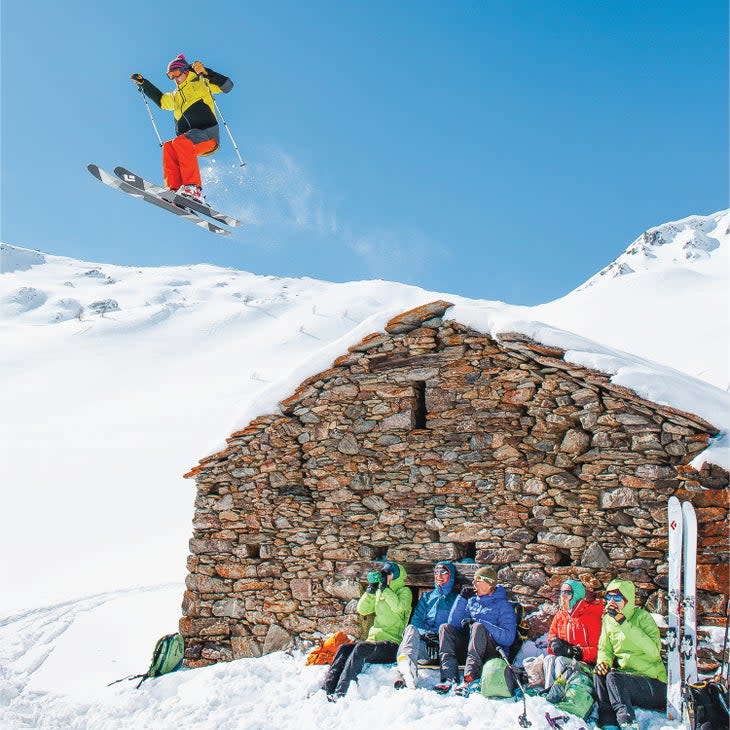
Earle speaks in measured, deliberate sentences, as though he understands the value of savoring a thought. When I talked with him for the first time, a little over a year after his diagnosis, he sounded broken. At one point, when asked if he felt any sense of optimism about getting better, his voice cracked slightly. "Generally, I feel deeply hopeless on a daily basis," he said.
When I reconnect with him two years later, he's more upbeat. It's not so much that he expects to return to normal, but that the baseline has shifted. In July 2020, Earle underwent the first of two major surgeries, a seven-hour craniocervical fusion to relieve pressure in his neck and, with any luck, alleviate some of his symptoms. He now has two screws at the base of his skull, two more going into his first cervical vertebra, and two more going into his second vertebra. All six screws are connected to a pair of rods on either side of his spine.
The results have been mixed, but mostly positive. Following several months of intense recovery, Earle's symptoms are much less acute than they were before the surgery. Relief came at a cost, though. He can't really turn his neck or look up, and climbing won't ever be safe. But he told me that, so far, it has been worth it. "Basically, my head was fused in this position of relief, and that's likely why I've been feeling so much better," he says.
Nine months later, in April 2021, Earle had a second surgery to treat what's known as tethered cord syndrome, a neurological disorder caused by tissue attachments that constrict the movement of the spinal cord within the spinal column. Earle was experiencing numbness in his legs, along with urinary incontinence. Doctors discovered that a small piece of deformed tissue was pulling too tightly on his spinal cord, so they went in between the second and third vertebrae of his lower back--where the nerves that control hip, knee, and lower-leg sensation are found--and cut it free.

Earle still sleeps a lot. But there are more breaks now, for music and meals, for a bit of computer work, and for walks outside in the garden. "A lot of people are probably like, Oh, that doesn't sound too out of the ordinary," he says. "But my life doesn't get any bigger than that." Socializing is limited. He and Coconis rarely go out of town, and exercise is essentially impossible. He's lost about 25 pounds, despite eating more than ever, including dessert, which he loves.
When Earle first got sick, climbing almost immediately faded as his priorities shifted to simply getting back to a point of being able to participate in life. "A friend was on the porch the other day and was saying, you know, this must have been a big identity crisis for you, losing climbing," he says. "The way I put it was that I overshot that identity crisis for the much deeper, murkier waters of not being a functional human anymore."
In some ways, it's hard for him to reflect on the energy he put into climbing. "To be fully honest with myself--which is kind of difficult and painful, actually--I think I did put climbing first," he says, with Coconis in mind. "Thinking back, there were a lot of life choices that were very selfish."
In Earle's climbing years, especially in Yosemite, he and his friends would refer to tourists and non-climbers as Muggles--the non-magical people from the Harry Potter books. These days, if he watches old climbing videos of himself, he finds himself marveling: Whoa, I used to do that?
He also knows that getting back just some of what he lost would be enough. At one point, a friend put together footage he had of Earle climbing, which Earle describes as a total joy to watch. "I still say that I don't really actively miss climbing," he tells me. "It would be amazing to climb again, but what I miss is just being healthy and able to live a full life."
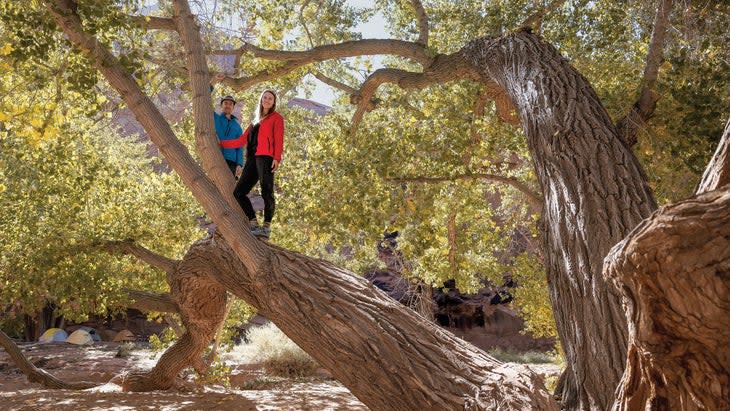
For exclusive access to all of our fitness, gear, adventure, and travel stories, plus discounts on trips, events, and gear, sign up for Outside+ today.

